SPONSORED POST: 4 Easily Adaptable Guidelines (and 1 Firm Rule) to Prepare an Excellent Cheese Board
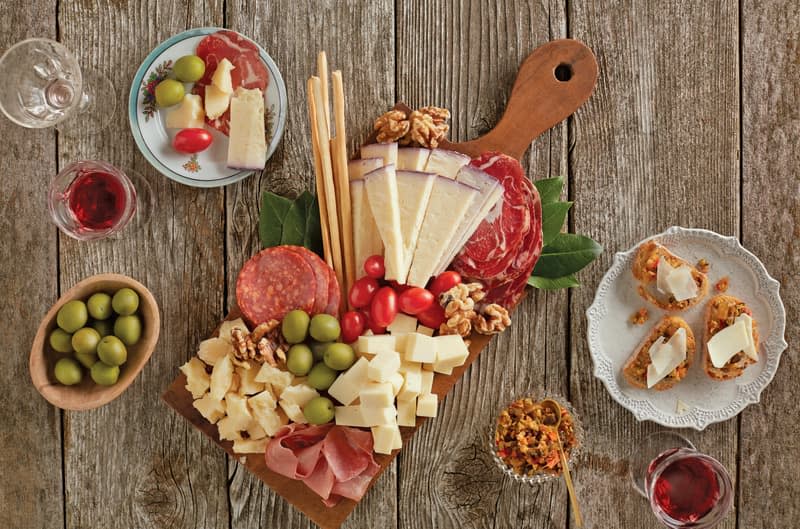
There’s an elegance in the term “cheese board” that transforms “stuff on a plate” into a curated collage of flavors. The liability that comes with that kind of $10 word, however, is what if you don’t know how to curate a collage of flavors? Fortunately, there are some very basic guidelines that will help you choose a good mix of cheeses and their accompaniments. And if you still feel like you’re in over your head, remember: It’s just stuff on a plate.
Guideline 1: Choose Wisconsin cheeses
If there’s one idea to remember above all others, it’s to choose award-winning cheeses. Before we even get into fancy ideas like “umami profile balance” and “fractional proportions,” know that if the cheeses are good, your guests will be happy. And even better: “Good” doesn’t necessarily imply expensive.
Whether you buy your cheese from a supermarket or a cheesemonger, there’s a good chance it came from Wisconsin. This is a state that knows — and loves — its cheese. The cheesemakers who craft it must be licensed in order to do so (this is the only state that requires a licensed cheesemaker to supervise each vat). What’s more, Wisconsin is the only place outside of Switzerland where a person can become a Master Cheesemaker — a title you can think of as a PhD in cheese that takes up to 15 years to earn.
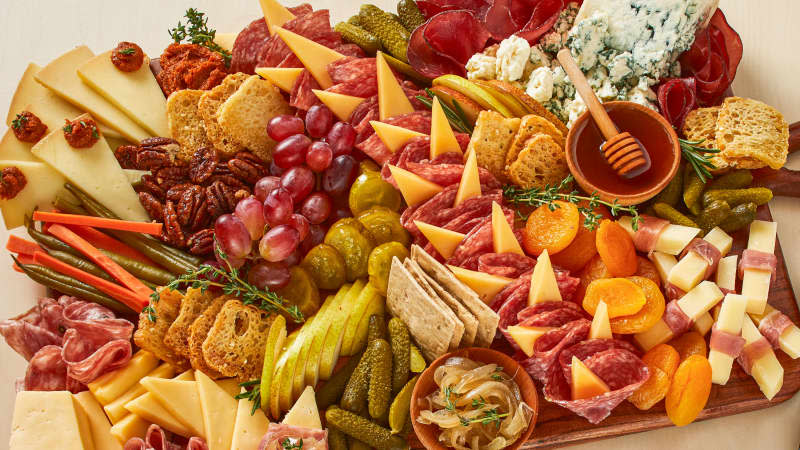
Guideline 2: Serve the right amount for your occasion
The rule of thumb for an appropriately sized cheese board is four ounces of cheese per person. If you’re serving it as part of a larger meal or with other snacks, scale down. If the cheese board is the main event, scale up and invite me. I like to serve larger wedges of fewer types for smaller gatherings, and a larger variety of smaller servings for big groups. That’s a personal preference, of course; you do you.
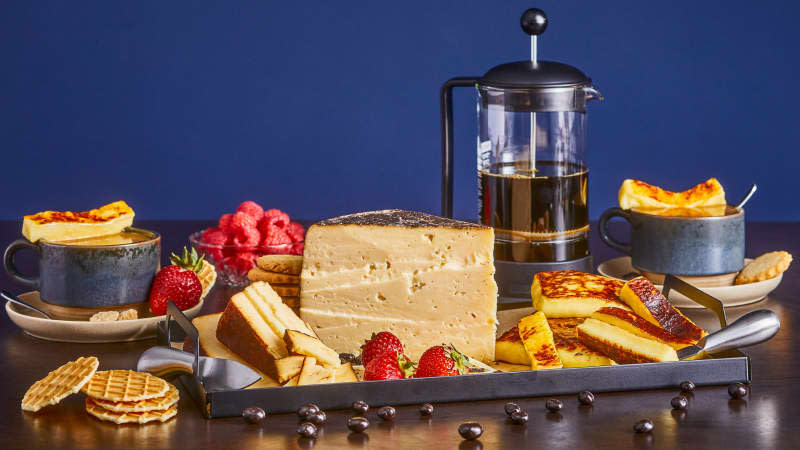
Guideline 3: Mix your cheese categories
This is the step where people can freeze up. If you really know your stuff, your shopping list will call for a bloomy rind, a fresh-and-young, and other styles. But if the worst complaint about your gathering is that you only served a firm-and-aged and not a semi-firm, you’re doing fine.
Rather than thinking of this as some kind of esoteric knowledge, think of it as the fun part. Try new things, find what you like, and ask your store’s cheese expert for suggestions. For a well-rounded cheese board, choose from different cheese styles. This is a good overview of the categories of cheese (blue, stinky, cheddar, etc.), and this is a robust guide to the varieties of cheese therein. You’ll see varieties you know well (provolone, gouda, Havarti) and some you’ll thank me for later (Canela, Dunbarton Blue, cupola).
Finally, when I buy cheeses for entertaining, I add a third dimension: something well-known, something interesting, and something way out there. The point here is to offer some variety and try new things! Cheeses that have the Proudly Wisconsin Cheese® badge on the package are all solid choices at every price point, and you’ll find them in 99 percent of grocery stores nationwide.
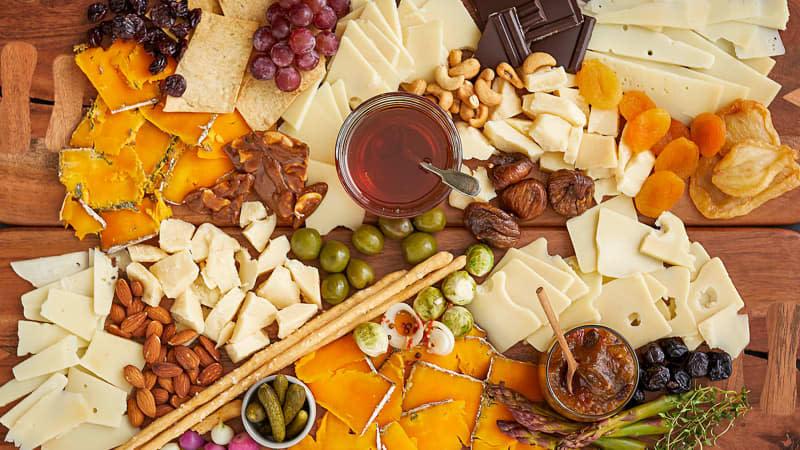
Guideline 4: Appeal to the full taste spectrum
If I’m your only guest, all I need is the cheese. Don’t bother with the fruits and crackers; just use that real estate for more cheese. But if you have other guests, it may be worth memorizing this very general flavor profile template. A well-rounded cheese board will appeal to all the taste buds, complementing the cheeses. Pick one from each of these categories for smaller cheese boards; pick more for larger:
Sweet: fresh fruit (grapes and apples are the standbys; little surprises like peaches and kiwis are fun), dried fruit, or some kind of fruit jam.
Tangy: chutney, mustard, or gherkins.
Salty: olives, cured meats, crackers, nuts (herbed, plain, or a mix), or bar mix.
Consider giving your board a loose (or strict) theme to help focus your choices. Here is some inspiration from the experts:
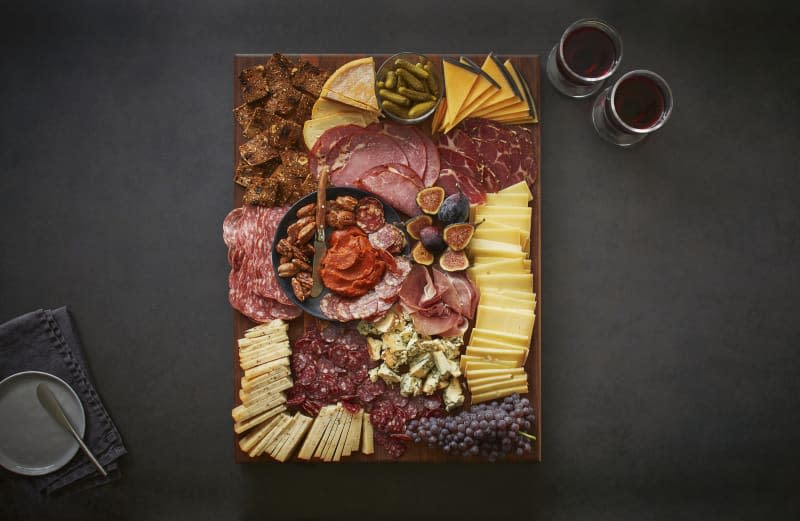
And 1 Firm Rule: Store and serve your cheese properly
Everything up to this point has been a loose guideline meant to be a starting point, but this is the one item I submit as a rule. Store your cheeses well and serve them properly. Obviously, keep them cold until it’s time to prep your board — that’s just plain food safety — but take an extra step to keep them fresh. When you get home from the store, unwrap anything in plastic, wrap it in parchment paper (this keeps them from getting that plastic aroma), then rewrap in plastic (this keeps it from drying out).
When it’s time to serve, take your cheeses out of the fridge 1.5–2 hours before you serve them so they come to room temperature — that’s where they taste best. Keep them wrapped until showtime to keep them from drying out. Then watch as the hub of the party inevitably moves to wherever you put the cheese.

